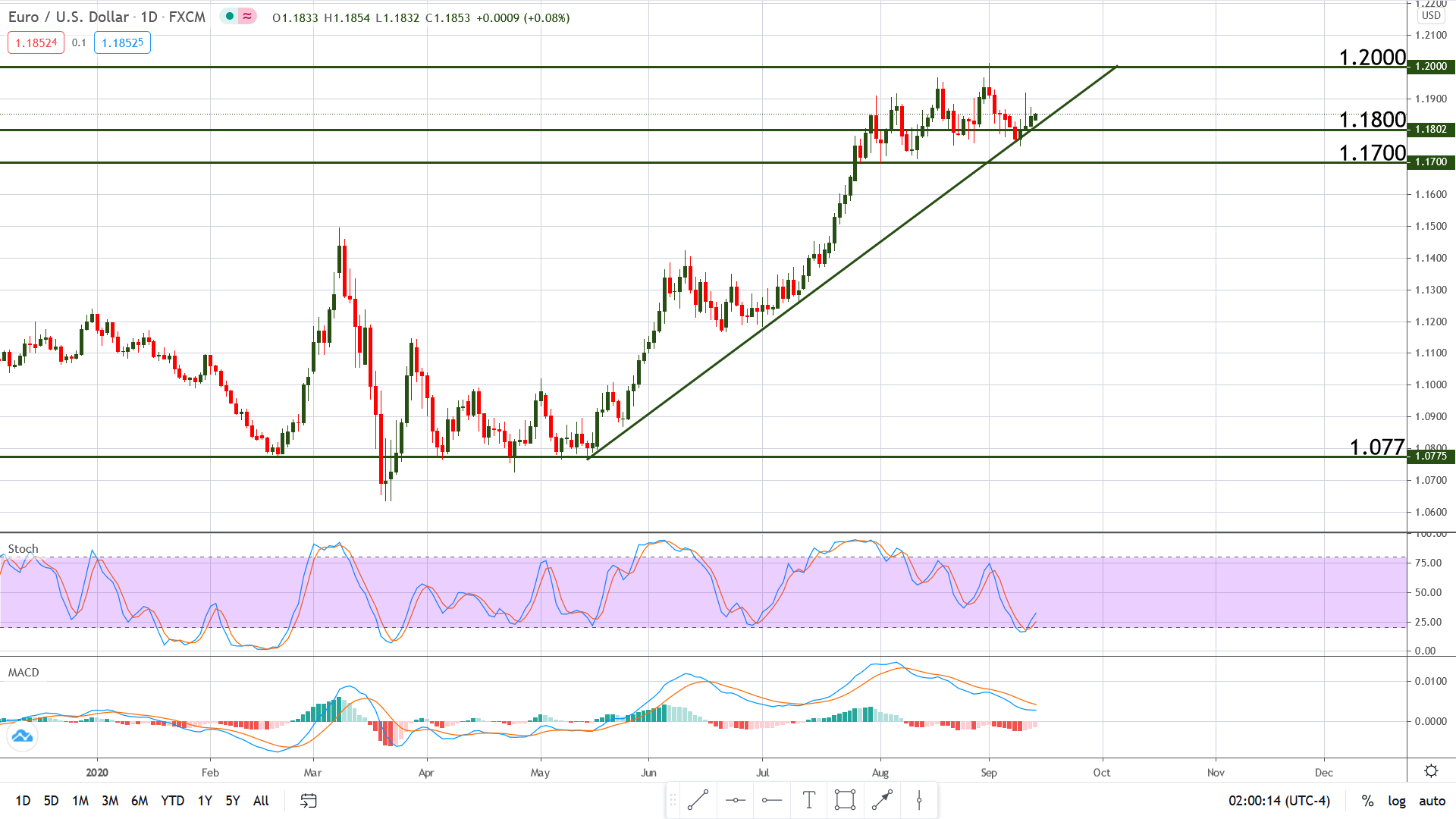Another Turning Point For The U.S. Dollar
Range-Bound Trading Ahead of FOMC Meetings and Funds Rate
by Bogdan Giulvezan
The never-ending tug of war between the Euro and the US Dollar is currently taking place around 1.1860, with the pair stuck in a range since the beginning of August. Price is testing a bullish trend line and although the Euro seems to have a bit more oomph than the greenback, things may very well change mid-week when the Fed will release their data.
The Week Ahead
The first part of the week is a bit lackluster, without major releases but things heat up Wednesday, September 16 when a cluster of data comes out. The first event is the release of the U.S. Core Retail Sales numbers, scheduled at 3:30 pm GMT and expected to post a change of 1.0% compared to the previous 1.9%. The report shows the change in the value of sales made at retail levels during the previous month but the Core version excludes automobiles from the calculation (because automobiles account for about 20% of all retail sales but they tend to be volatile).
Later in the day, at 9:00 pm GMT the FOMC will release their Economic Projections as well as the Federal Funds Rate (not expected to change from the current <0.25%). The document also contains inflation projections for the next 2 years and is closely monitored by market participants because it usually has a significant impact on the US Dollar, depending on whether the tone is hawkish or dovish.
Half an hour later, at 9:30 pm GMT, Federal Reserve Chairman Powell will hold a press conference which is usually a volatility catalyst but price behavior depends on a multitude of factors, among which the tone and way the Chairman answers journalists’ questions.
The Technical Scene
After a brief dip below 1.1800, the pair found support at the bullish trend line and reversed direction, currently trading around 1.1860. This type of price action shows that control doesn’t clearly belong to either side and that we will most likely see more of this range-bound trading. The first two days of the week lack major economic releases, a fact that will potentially contribute to slow price action.
It must be noted that price is reacting to the trend line, which means that a break or bounce from here will likely be followed by a strong move. For now, the indicators show mixed signals, with the Stochastic crossing upwards in oversold (bullish signal) and the MACD moving to the downside, with the lines spread apart (bearish momentum). Use caution and apply strategies suited to ranging markets until a clearer direction emerges.
